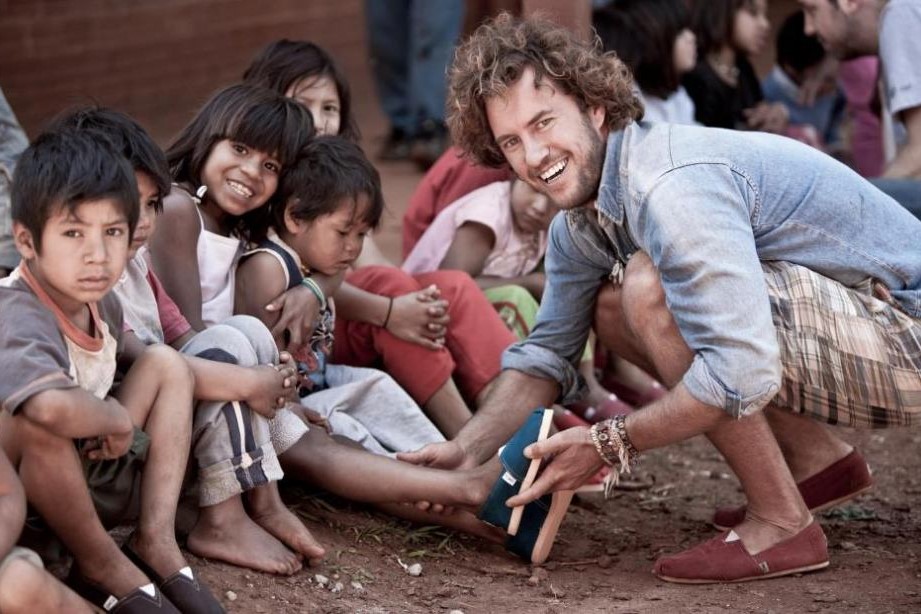A chance meeting, a novel idea, and a handful of interns working out of a small, dusty factory all helped Blake Mycoskie launch TOMS Shoes – but the defining moment came with a story told in an airport.
In 2006, young entrepreneur Blake Mycoskie promised himself a holiday. He was working on his fourth start-up and needed some time away. He went to Argentina and played polo, learned to tango, indulged in Malbec – and met a woman volunteering on a shoe drive.
The woman explained that her organisation worked to put shoes on children’s feet. Outside the city, kids were going barefoot which left them exposed to diseases while doing things like walking to the well for water, as well as preventing them from attending school. She lamented over their biggest struggle – supply issues due to reliance on donations. Many still went without shoes simply due to a lack of required sizes.
Her story hit home.
Blake travelled with her group, seeing firsthand the sores and infections on the feet of these kids. His heart hurt for them, and the seed of a new idea began to germinate – how to guarantee a constant supply of shoes, without having to rely on donations?
On his travels he had noticed the versatile soft canvas shoe that was worn by people both in the city and on the farm. His entrepreneurial mind had noted that it was a style that might do well in America.
There was his answer.
A for-profit business that would provide shoes for children in need. The concept was simple – sell a pair of shoes today, give a pair pf shoes tomorrow. One for one.
Blake took his idea home and got to work, calling his project TOMS Shoes (derived from “Tomorrow’s Shoes”, which wouldn’t fit well on a label) operating firstly out of a barn, then a garage-sized “factory” to make samples to take back to the States. However, the shoe industry is a crowded place and he struggled to stand out.
In the airport on the way home from a somewhat unsuccessful sales trip to New York, he saw the first person wearing TOMS shoes who wasn’t a friend or family member. He couldn’t resist complimenting her on her cool shoes. The woman (not knowing who he was) began enthusiastically relating to him his own origin story, exclaiming how amazing it was that because she bought a pair of TOMS shoes, someone in need would get a pair too! Blake was blown away that a random stranger in an airport felt compelled to share his story.
A powerful realisation.
No-one cared that much about another shoe in a market flooded with shoe options. What struck them was the story. He knew then that he needed to shift his focus from the product, to telling the story behind it. The purpose. He used the power of his story to grow his seed of an idea into what is today – a $500 million business helping improve people’s lives.
Now, when I notice someone wearing a pair of TOMS shoes, it comes with a warm, feel-good factor – Because of you, someone in need has a pair of shoes. The story gels with everyone, making much more of an impression than wearing the simple canvas shoe does. The story touches hearts in a way that a product simply can’t.
The lesson here is this. A purposeful story is bigger than the product or service you provide. So lead with who you are, and why you do what you do; then tell them what you have to offer.
Whether you’ve been in business for two months or 20 years, you can apply the power of storytelling to help your business flourish. Your story is what makes you unique. Your story is a gamechanger.

